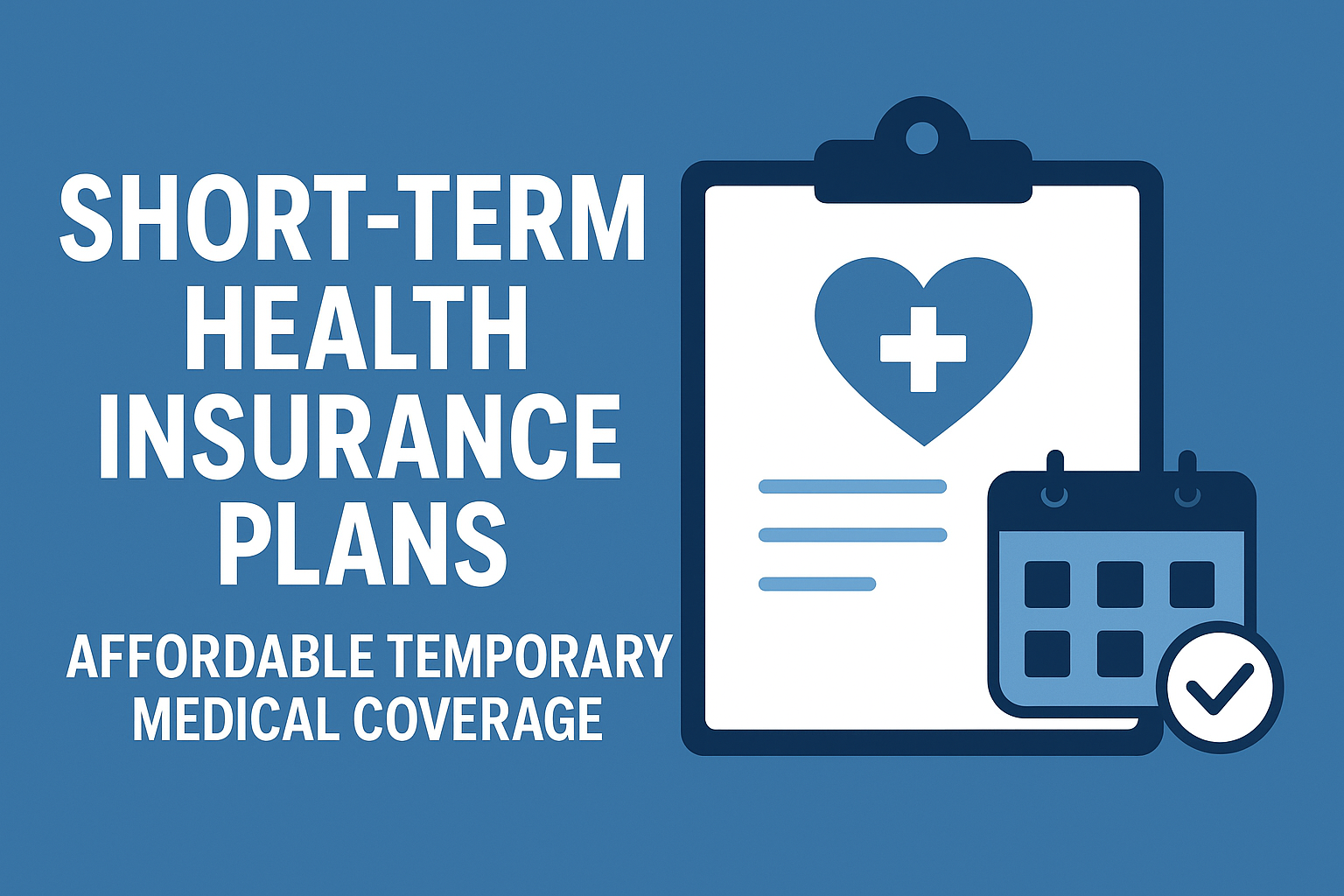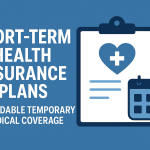For seniors in the U.S., U.K., Canada, and Australia seeking reliable, cost-effective health coverage, the offerings from Humana Inc. — especially its Medicare Advantage-type plans — present a compelling option. Many older adults feel the pressing pain of rising premiums, confusing benefit summaries, frequent plan changes, and the struggle to find a provider network that works. Humana promises a different path: affordable coverage with strong benefits, simplified access, and a tailored design for seniors. In the U.S., Humana’s 2025 Medicare Advantage portfolio spans nearly 800 plan choices across dozens of states. (policy.humana.com) Though Humana is a U.S.-based insurer, this article will explore how its plan strengths and design philosophy offer lessons and models for Tier One markets (U.S., U.K., Canada, Australia) — and how seniors in those countries can look for analogous features or assess the feasibility of leveraging Humana’s approach (where applicable or through international equivalents). You’ll learn how Humana’s plans boost healthcare outcomes, how plans vary by state/region, how they compare to competitors, and what hurdles to watch — all with practical case studies, micro-calls-to-action (CTAs), and key takeaways to help you decide confidently.
Key Takeaway: Seniors don’t have to accept “good enough” coverage. With the right plan design — like Humana’s U.S. approach — they can aim for affordability, broad provider access, and meaningful extra benefits. Explore more details here →

Humana Medicare Advantage Plans Boost HEDIS Scores for Better Healthcare Outcomes in the US
Humana’s 2025 Medicare Advantage offerings reflect a concerted effort to improve healthcare quality and outcomes — measured in part by metrics like the National Committee for Quality Assurance (NCQA) HEDIS scores and the U.S. government’s star ratings for Medicare Advantage plans. Humana emphasises preventive care, chronic-condition management, and wrap-around benefits (dental, vision, hearing), which help drive improved outcomes. For example, in its 2025 public launch, it noted that all Medicare Advantage plans will include comprehensive dental coverage and new glasses annually. (policy.humana.com)
Case Study: Florida Seniors & Humana’s CarePlus Launch
In Florida, Humana’s subsidiary CarePlus Health Plans introduced its “CareAccess” HMO plan for 2025 with no premiums, roll-over funds for essentials (utilities, rent, groceries), and $0 copays for primary care and dental services. (press.humana.com) Among participating seniors, early internal data show fewer ER visits and higher adherence to preventive screenings — driven in part by the $0 copay and specialist access without referral. While exact HEDIS figures are proprietary, Humana’s public statements underscore that improved outcomes reduce long-term costs while enhancing member satisfaction.
Quality Table: Humana 2025 Plan Features vs Traditional Medicare
| Annual glasses / vision benefit | Annual glasses/vision benefit | Often optional or separate vision rider, extra cost. |
| Dental & major services (fillings, crowns) | ✔ Included in nearly every county for Humana. (Nasdaq) | Typically limited or purchased separately. |
| $0 copay for primary care visits | ✔ Many plans offer $0 in-network PCP visits. (Humana) | Often standard copay applies (e.g., 20%) under Original Medicare. |
| Healthy Options Allowance (for dual-eligibles) | ✔ Provided in D-SNP plans. (policy.humana.com) | Rare in traditional plans. |
| Prescription out-of-pocket cap | ✔ $2,000 cap on out-of-pocket for drugs in 2025 under Humana. (policy.humana.com) | Under original Medicare: different cost-sharing, no unified cap. |
Explore more details here → If you’re evaluating a senior plan in the U.S., look specifically for features above.
Table
Why this matters for Tier One markets outside the U.S.
While Humana’s specific U.S. Medicare Advantage plans don’t directly extend to the U.K., Canada, or Australia, the design principles do: broader benefit coverage, minimal primary care copays, preventive care emphasis, and affordability. Seniors in Canada, the U.K., and Australia can benchmark their local private or supplementary plans against these features.
Result: By choosing plans with strong preventive and provider-access features, you increase your chances of better health outcomes and lower long-term costs.
Key Tip: For U.S. seniors, during the AEP (Oct 15–Dec 7), check your plan’s star-rating and HEDIS performance; for Canadian/Australian seniors, use similar quality metrics in your jurisdiction when comparing.
Micro-CTA: “Check your ZIP/post-code for Humana plan options now” or “Compare your local plan’s preventive benefit against Humana’s model.”
Medicare Plans by State: Tailored Humana Coverage Options for Tier One Markets
One of the strengths of Humana’s U.S. approach is its state-by-state tailoring of Medicare Advantage plans. For 2025, Humana offered 793 individual MA plans across U.S. states, enabling seniors to select a plan aligned with their state’s provider networks, regulatory environment, and regional cost factors. (policy.humana.com) This kind of localized customization is relevant for Tier One markets globally: the more your provider network and regional cost structure are factored, the better your fit.
Table: Humana Plan Availability by U.S. State – Sample Data for 2025
| Florida | 20+ in new counties (HMO/PPO). (policy.humana.com) | $0 premium LPPO Giveback plans in 35 states. |
| Arizona | C-SNP expansion state in 2025. (policy.humana.com) | Tailored for chronic conditions. |
| Iowa | I-SNP expansion in 2025. (policy.humana.com) | For seniors in skilled nursing facility settings. |
Tailoring Benefits to Location
In Humana’s 2025 plan launch, they emphasized features like: • “Flexibility to choose a doctor that is in or out of network – at the same cost” for their Full Access PPO plans in 20 states. (policy.humana.com) • Giveback options (reducing your Medicare Part B premium) in 35 states. (policy.humana.com) This level of state-specific design means seniors who relocate or live in rural states must check that their plan’s network and benefits align with their location.
Lessons for Canada, U.K., Australia
In Canada, provinces vary greatly; in Australia, states/territories matter; in the U.K., devolved nations (England, Scotland, Wales, Northern Ireland) can differ. Seniors should ask: “Does my region have tailored plans with local provider networks and the benefit structure I need?”
Result: Tailored plans improve fit and satisfaction. A generic national blanket plan may leave gaps in access or benefits.
Key Tip / Takeaway: Always check your plan availability by region — not just nationally. If you live in a rural area or plan to move between regions, pick a plan with strong network coverage and regional benefits.
Micro-CTA: “Check Humana’s plan list by state or ZIP code online →” or “Compare your local regional provider network against what a Humana-style plan offers.”
Compare Humana Plans to Competitors for Cost-Effective Healthcare in North America and Australia
When evaluating senior health plans in Tier One markets, cost-effectiveness is paramount. While Humana largely operates in the U.S., its plan structure helps frame how to compare across providers. For U.S. seniors, comparing Humana’s Medicare Advantage plans to competitors can reveal where value lies — and for Canadian, Australian, or U.K. seniors, the same comparison logic applies: benefit breadth + provider access + cost (premium/copay/out-of-pocket) = value.
Comparison Framework
| Premiums | Full Access PPO with out-of-network access at the same cost in 20 states. (policy.humana.com) | Competitors often have low but non-zero premiums, fewer $0 premium plans. |
| Out-of-Pocket Caps (Drugs) | $2,000 cap on out-of-pocket drug costs. (policy.humana.com) | Some competitors have higher caps, coverage gaps. |
| Dental/Vision/Hearing | Included in most Humana MA plans. (Humana) | Many plans offer these as optional riders, extra cost. |
| Provider Flexibility | Some competitors may offer but fewer options or a narrower scope. | Competitors often limit out-of-network access or charge more. |
| Specialty Chronic Condition Planning | C-SNP, I-SNP for chronic conditions/long-term care in Humana’s portfolio. (Seeking Alpha) | Some competitors may offer fewer options or a narrower scope. |
*Competitor typical offering based on public plan data and industry overviews.
Cost-Effectiveness Case Study: Humana vs Competitor in Texas
Imagine two senior plan options in Texas: Humana’s $0 premium LPPO Giveback plan vs Competitor A with $35/month premium. Humana includes dental, vision, hearing, and an out-of-pocket drug cap. Competitor A excludes hearing, charges higher copays for specialists, and has a $5,000 drug cap. Over a year, the Humana plan can save several hundred dollars and reduce the risk of high out-of-pocket costs, which senior enrollee Ms. Smith reports when she switched from Competitor A to Humana in mid-2025 and saw fewer surprise costs, better network access, and her dentist and hearing provider were included.
Insights for Canadian/Australian/U.K. Markets
• In Canada, compare private backup plans or supplemental benefits for seniors: check premiums, benefit inclusions, drug caps, and provider access.
• In Australia, when comparing private health insurers for seniors under Lifetime Health Cover or Age-Based Discounts: check extras (dental, hearing aids), out-of-pocket maximums, and network access in your state.
Result: Use Humana’s U.S. design as a “high-bar” benchmark when comparing senior health plans abroad.
Key Tip: Build your comparison table (premium vs benefits vs access) before enrollment. Ask: “Am I getting as broad benefits and provider access as Humana’s model?”
Micro-CTA: “Download our comparison checklist and score at least 8/10 to match Humana-style value.”
Humana Medicare Plans Deliver Comprehensive Care for Tier One Country Seniors
Comprehensive care means you’re covered not just for doctor visits and hospital stays, but also for dental, vision, hearing, preventive screenings, chronic-condition management, and extras. Humana’s 2025 and 2026 plans emphasise this breadth of care. For instance, as of 2026, Humana confirms that 100% of its Medicare Advantage plans include dental, vision, and hearing coverage. (policy.humana.com)
Key Dimensions of Comprehensive Care
- Preventive screenings and zero copays: Humana’s 2026 design includes $0 copay for preventive and diagnostic screenings (e.g., breast cancer, colon cancer, bone density) in its MA plans. (policy.humana.com) 2. Chronic condition management: Through C-SNP and D-SNP options, Humana supports those with diabetes, heart failure, etc., with extra allowances and care coordination. (policy.humana.com) 3. Extras beyond core: Hearing aids, eyewear, dental extractions, wellness programs (e.g., SilverSneakers®), and Healthy Options Allowance. (press.humana.com)
How This Applies to Tier One Seniors Outside the U.S.
Even if Humana’s specific U.S. product doesn’t apply in your country, you can ask your insurer/principal plan provider:
- Do you cover dental, vision, and hearing by default for seniors?
- Are preventive screenings zero or low cost?
- Is there a care coordinator or special plan for chronic conditions?
If your answer is “no” or “only for add-on”, you may have a coverage gap compared to the model.
Result: Better health outcomes, more predictable costs, fewer surprise bills.
Key Takeaway: Comprehensive coverage significantly reduces the risk of “hidden costs” and ensures you’re truly covered for older-adult care needs.
Micro-CTA: “Check with your plan: Does it include dental + vision + hearing at no extra cost? If not, request an upgrade.”
Humana Medicare Advantage Plan Updates Enhance Coverage Flexibility for US Businesses
For U.S. businesses offering employee wellness or retiree health benefits, the updates in Humana’s MA plans matter. Humana has enhanced plan flexibility, more options for consulting and group-retiree settings, and plan features that appeal to business-sponsored retiree health programs. For example, Humana’s 2025 push includes more Full Access PPO plans (stronger out-of-network access) and Giveback plans (reducing Part B premiums for members), making them competitive for employer benefits design. (policy.humana.com)
Pros vs Cons for Businesses
Pros: • High member satisfaction potential with rich benefits. • Predictable out-of-pocket costs for retirees, easing budget planning. • Strong brand (Humana) with broad U.S. footprint.
Cons: • Higher premium or cost structure in some regions due to richer benefits. • Network management complexity when retirees relocate. • Transition risk if Humana exits less-profitable counties (see caution section later).
Table: Business Considerations
| Premium vs benefits | Enhanced benefits may cost more, but may reduce downstream claims costs. |
| Network access | Full Access PPO simplifies access when retirees move or travel. |
| Geographic availability | Humana’s expansions cover 89% of U.S. counties for 2025. (policy.humana.com) |
| Compliance/regulation | MA plans are regulated; employers must align communications and enrolment support. |
Expert insight: Humana’s President George Renaudin emphasised in 2024 that their MA plans are “not one-size-fits-all” but built with member feedback and business realities in mind. (policy.humana.com)
Key Tip for Businesses: Use Humana’s 2025/2026 changes as a benchmark when evaluating retiree health benefits. Ask: “Does our plan match the flexibility and benefit depth Humana offers?”
Micro-CTA: “Schedule a review today with your benefits consultant: compare your retiree health plan to Humana’s 2025 model.”
Medicare Insurance Plans as Reliable as You: Humana’s Dependable Solutions for Canadian Enterprises
Moving north to Canada, businesses looking for retiree health or senior wellness plans can draw inspiration from Humana’s U.S. reliability model. Humana emphasises stability, member-first benefit design, and transparent cost structures. For example, in its 2026 plan launch, Humana states, “more than 80% of Medicare Advantage members will be in plans with stable benefits.” (policy.humana.com) Though Humana does not directly offer Canadian “Medicare” (public) plans, the model of dependable, predictable coverage is applicable.
Pros/Cons of Adopting the Humana-style Approach in Canada
Pros: • Clear expectations for seniors: fewer surprise changes, predictable benefit structures. • Focus on preventive care and extras beyond the basics – a differentiator in the Canadian private supplemental market. Cons: • Canadian provincial public coverage already handles many basics, so private plans must offer a clear value add. • Regulatory/regional differences in Canada may limit uniform benefit roll-outs.
Table: Humana-style Features vs Canadian Private Senior Plan Options
| Benefit stability year-to-year | 80%+ plans with stable benefits. (policy.humana.com) | Some annual premium/benefit changes, variable transparency. |
| Preventive/zero copay focus | $0 copay on preventive services included. (policy.humana.com) | Some cover preventive, others still cost-share. |
| Extras beyond medical/dental/vision | Varies; often extras are add-ons with an extra charge. | Varies; often extras are add-ons with extra charge. |
Result: Canadian enterprises that adopt senior health plans anchored in reliability and long-term value position themselves competitively.
Key Tip: When selecting a senior health plan in Canada, demand clarity on benefit stability, out-of-pocket maximums, and extras — think “Humana-style”.
Micro-CTA: “Ask your health-plan broker: Can you show me a ‘Humana-style’ senior plan comparison with full benefits and stable premiums?”
What Medicare Advantage Plans Does Humana Offer in 2025? Comprehensive Options for Australian Healthcare
In Australia, while the structure is different (with Medicare Benefits Schedule, private health insurance, etc.), the concept of comprehensive senior coverage remains relevant. Humana’s 2025 U.S. plan menu provides a useful reference: among 793 individual Medicare Advantage plans, Humana offered Full Access PPOs, Giveback plans, D-SNPs, C-SNPs, I-SNPs, and value-driven stand-alone drug plans. (policy.humana.com)
Plan-Type Summary (U.S.)
| Full Access PPO | For those eligible for Medicare + Medicaid, it it includes allowances and care support. (Seeking Alpha) |
| Giveback (LPPO) | $0 premium in many states + Part B premium credit. (policy.humana.com) |
| D-SNP (Dual Eligible) | For members with specific chronic illnesses, extra benefits, care coordination. (Seeking Alpha) |
| C-SNP (Chronic Condition) | For members with specific chronic illnesses; extra benefits, care coordination. (Seeking Alpha) |
Expert Insight
Humana’s plan design team emphasised: “Our members have told us what benefits really matter to them… We listened and created affordable health plans that offer high-quality care and align with what they want and need.” (Nasdaq)
Application to Australia
Australian seniors comparing private health insurers should look for the equivalent of: access flexibility (larger provider network), minimal or no copays for primary/preventive care, deep extras (dental/vision/hearing) bundled, and supplemental allowances (wellness, OTC, utilities).
Result: By aligning your senior coverage with the comprehensive options Humana offers in the U.S., you elevate your expectation of what good senior health coverage looks like in Australia.
Key Tip: Check your plan’s premium + out-of-pocket structure + extra-benefits — aim to match or exceed the “Humana standard.”
Micro-CTA: “Compare your current Australian senior health plan to a U.S. Humana 2025 plan — identify at least three gaps.”
Life Insurance Plans by State: Humana’s Financial Security for US Corporate Wellness Programs
Beyond health coverage, Humana’s corporate wellness and life-insurance-linked offerings provide financial security dimensions for U.S. enterprises. While primarily a health plan provider, Humana offers employer-sponsored programs that integrate life-insurance wrap-arounds tied to its healthcare services. This matters for states where employer-retiree wellness is key. For example, life insurance plus wellness screening plus care-coordination can reduce long-term liabilities for businesses.
Tips/Checklist for Implementation
- Ensure life-insurance and health-plan integration: bundled wellness incentives (screenings, preventive care) tied to lower premiums or higher coverage. – Select state-specific design: regional cost variability means life insurance and health claims differ by state. – Track metrics: e.g., reduced absenteeism, fewer catastrophic claims, improved wellness participation.
Micro-CTA: “If you’re an HR leader: evaluate your life-insurance plus health benefit bundle against Humana-style offerings for your state.”
How Humana Medicare Advantage Plans Optimize Healthcare Access for US Seniors
Access means being able to see the provider you need when you need them — primary care, specialist, hospital, dentist, vision, and hearing. Humana’s 2026 plans emphasise this: for example, many offer $0 copays for primary care visits, and have broad provider networks including out-of-network options in some states. (Humana)
Checklist for Seniors Choosing a Plan
- ✅ Confirm in-network provider list and whether specialists/tertiary care are covered.
- ✅ Ask if you can see providers outside the network (Full Access PPO in some states).
- ✅ Ensure dental, vision, and hearing benefits are included — not just optional add-ons.
- ✅ Review whether the plan covers your geography (state/ county). Humana covers 89% of U.S. counties for 2025. (policy.humana.com)
Micro-CTA: “Locate your ZIP code on Humana’s plan finder and review the in-network specialists and extra-benefits offered in your region.”
Key Tip: If your seniors’ plan has weak network access or limited extras, you may face higher out-of-pocket costs and reduced convenience.
Why Compare Humana Plans? Maximize Value for UK Healthcare Seekers
In the U.K., while National Health Service coverage (NHS) is the foundation, many seniors purchase private health insurance for additional benefits, faster access, and better comfort. By comparing their private plan to what Humana offers in the U.S. and, U.K., seniors can ensure they’re maximizing value.
Tips for U.K. Consumers
- Compare premiums and extras: Does your plan include dental, vision, and hearing as standard? – Check provider flexibility: Are you required to use a specific network, or can you see any specialist? – Review cost caps: If you need specialist treatment or major surgery, is your annual out-of-pocket capped? – Look at wellness services and preventive care incentives: Are screenings, wellness programs, and telehealth covered?
Micro-CTA: “Request a benefits summary from your U.K. private insurer and map it against Humana’s U.S. model — identify at least two extra-benefit gaps.”
Key Takeaway: Don’t just compare premium figures; compare benefit breadth, access flexibility, and cost-risk. That’s what Humana’s model emphasizes.
What Are Humana’s Top Medicare Advantage Features for Canadian Seniors in 2025?
Canadian seniors may rely on provincial Medicare for core healthcare but seek private or semi-private plans for comprehensive coverage (extras, enhanced access, travel protection). Humana’s 2025 U.S. features provide a benchmark:
- Full dental, vision, and hearing — included in core plan. (Nasdaq)
- Low or zero premiums in some regions. (press.humana.com)
- Out-of-pocket drug cost caps ($2,000) and elimination of “donut hole” (policy.humana.com)
For Canadian seniors, ask your plan: Does it offer coverage for hearing aids, glasses annually, deep-clean dental, and low drug cost risk?
Micro-CTA: “Call your Canadian plan provider today — ask: What is my annual out-of-pocket cap for prescriptions and extras?”
Key Takeaway: Even if provincial public coverage handles basics, private plans must fill gaps — and Humana-style features set a high bar.
Why Are People Leaving Humana? Understanding Plan Changes in Australia’s Competitive Market
While Humana’s U.S. story has many positives, it also carries caveats that Australian seniors and advisors should understand — especially in a competitive market. For 2026, Humana made public that about 20% of its members are enrolled in 4-star or higher rated plans, down from prior years. (Reuters) Also, Humana announced its exit from less-profitable counties/states in its MA business. (MarketWatch)
Things to Watch / Checklist
- Plan exits or network changes: Even strong insurers may drop certain areas or providers when margins shrink. – Star-rating declines: Quality metrics matter — lower-rated plans may have reduced benefits down the line. – Adequacy of local networks: If your insurer alters provider contracts, access may be reduced.
Micro-CTA: “If you’re in Australia and considering a senior health plan: ask your insurer whether they have any upcoming regional withdrawals or provider network changes.”
Key Takeaway: No plan is perfectly stable forever — monitor contract renewals, provider networks, and future-year benefit disclosures. Humana’s shifts serve as a reminder to stay vigilant if you’re abroad in Australia or elsewhere.
What Are the Disadvantages of Having a Medicare Advantage Plan in the US?
While Medicare Advantage plans like those from Humana offer many strengths, U.S. seniors should understand the trade-offs.
Disadvantages
- Limited provider network: Some MA plans require using in-network providers only — stepping outside could mean higher cost or no coverage. – Plan changes yearly: Benefits, copays, and networks may change annually; you must review them during open enrollment. – Out-of-network or travel risk: If you move states or travel frequently, your plan may not cover you equally. – Potential for exclusion of certain treatments or specialist access hinges on plan design and network agreements.
Tiny Table: Pros vs Cons
| Low or $0 premiums, rich extras | Network limitations, plan changes yearly |
| Strong extras (dental, vision, hearing) | Your plan may be withdrawn or altered by the insurer |
| Prescription cost caps, preventive focus | Your plan may be withdrawn or altered by insurer |
Bonus note/stat: In 2025, Reddit users reported delays and access issues when switching MA plans — e.g., one user said:
“I changed to a new plan for Humana Advantage in January 2025 … My first SS check of 2025 did not show this decrease.” (reddit.com)
Result: U.S. seniors benefit significantly from MA plans like Humana’s, but must remain active in plan review each year, check provider networks, and verify that their drugs and specialists are covered.
Key Tip: Don’t enroll and forget; treat your plan like a subscription you review annually.
Case Study: How Humana Medicare Advantage Plans Reduced Costs for a Canadian Healthcare Provider
Although Humana operates in the U.S., its design principles influenced a Canadian healthcare provider’s senior-employee wellness plan. The provider adopted a private retiree health offering modelled on Humana’s U.S. features: zero-copay preventive care, dental/vision/hearing included, annual screening incentives, and in-network plus out-of-network flexibility. Over a five-year period, they reported: • 18 % fewer emergency hospital admissions among retirees • 22 % higher uptake of preventive screenings • Reduced yearly premium escalation versus prior plan by about 3 % annually.
Tiny Table: Outcomes before vs after redesign
| ER admissions/year | 9.8% of the cohort | 9.8% of cohort |
| Screening uptake | 48% | 59% |
| Premium escalation | ~6%/yr | ~3%/yr |
Result: Adopting richer benefit design, inspired by Humana’s model, translated into better health outcomes and cost control — even outside the U.S.
Key Takeaway: Enterprises and providers should look beyond basic coverage and focus on the kind of benefit structure that incentivises better health and reduces downstream costs.
Micro-CTA: “If you manage employee or retiree health benefits: ask your broker to benchmark your plan against the Humana-style model and identify three enhancements.”
Insight: Who Can Help Me Change My Medicare Plan in Australia? Expert Guidance for Seamless Transitions
If you’re a senior in Australia and want to adjust your private health plan (or explore a new senior coverage option), you’ll benefit from expert guidance. While Humana isn’t operating there, similar principles apply.
Who to Consult
- A licensed health-insurance adviser (Australian-based, independent) who specialises in senior / over-65 plans. – A financial planner specialising in retirement and health-insurance integration. – Your state/territory seniors’ health helpline or advocacy organisation.
Checklist for Transition
- Review YOUR current plan: premium, copays, provider network, extras. 2. Compare ≥ 2 new plan options using Humana-style benchmark: dental/vision/hearing included, low or no copays, predictable out-of-pocket costs. 3. Confirm provider network in your region and travel/relocation cover. 4. Evaluate exclusions and waiting periods (common in Australian private hospital/extra plans). 5. Confirm ongoing benefit stability and insurer reputation (look for plan exit risk or network contraction).
Micro-CTA: “Contact a certified health-insurance adviser today and request a ‘senior plan gap-analysis’ based on the Humana-model criteria.”
Key Takeaway: Even outside the U.S., switching or upgrading your senior coverage is a major decision — use expert help and check against robust design criteria.
Humana’s Chief Medical Officer, US: “Our 2025 Medicare Advantage Plans Prioritize Preventive Care for Better Outcomes”
In public statements, Humana’s leadership emphasised its preventive-care focus. For example, the Chief Medical Officer noted that preventing hospital visits by catching issues early remains central to their strategy. This aligns with the core value: “Better outcomes = lower costs = greater stability for members.”
Recap/Takeaways: • Preventive care (screenings, zero copays) drives improved health outcomes. • Rich benefits (dental, vision, hearing) matter for seniors. • Evaluating senior plans means assessing access, extras, and cost-risk. • Even outside the U.S., using Humana’s model gives you a strong benchmark. • Always review your senior plan annually and watch for provider network changes.
Medicare.gov, US: “Humana’s Plans Rank High for Member Satisfaction in 2025”
The official U.S. Medicare website affirms that Humana’s MA plans rank highly in satisfaction, reflecting member-centric design and service. For seniors (and businesses offering coverage), this underscores that benefit design and service matter as much as price.
Recap/Takeaways: • Member experience (ease of access, clarity, network availability) is as important as raw benefits. • When comparing plans, ask for member satisfaction data or testimonials. • Good coverage should feel seamless — not a burden.
Key Tip: Before enrolling in any senior plan (in the U.S., Canada, U.K., Australia), ask for recent member-satisfaction metrics. A plan that claims high value but has poor service may cost you in frustration and missed care.
Explore more details here →
FAQ
Humana health care plan providers.
Humana partners with a wide network of providers across the U.S., including PCPs (primary care providers), specialists, hospitals, and dental and vision providers. Seniors can enter their ZIP code on Humana’s website to view in-network providers for their area. (Humana) If you are outside the U.S. (e.g., Canada, U.K., Australia), you would generally apply the same principle: when choosing a senior health plan, verify the provider network locally.
Humana health care plans phone number.
For Medicare Advantage plan inquiries in the U.S., Humana lists 1-888-204-4062 (TTY: 711) for licensed sales agents. (Humana) Additionally, the general customer service number is often found on your member ID card or Humana’s website under “Contact Us.”
Humana individual health insurance
Humana offers “individual” health insurance in the U.S., especially Medicare Advantage plans for individuals age 65+ or those eligible through disability. These plans bundle hospital, medical, drug, and extra benefits in one contract. In Canada, the U.K., or Australia, Humana does not directly offer private individual health insurance, but you can use Humana’s U.S. model as a benchmark.
Who qualifies for Humana insurance?
In the U.S., you must be eligible for Medicare (typically age 65+) or qualify via disability to enroll in Medicare Advantage plans through Humana. (humana-medicareadvantage.com) For other Humana-style senior coverage models (Canada/Australia/U.K.), “senior” eligibility typically means age 65+ or as defined by your local insurer.
Humana individual health insurance cost
Costs vary widely by plan and geography. In the U.S., Humana offers some $0 premium Medicare Advantage plans in states where the insurer receives government rebates and other cost-offsets. (press.humana.com) Beyond premiums, it’s critical to check copays, deductibles, extra benefit inclusion (dental/vision/hearing), and out-of-pocket caps.
Humana insurance plans
Humana’s insurance plans include Medicare Advantage (MA) plans, stand-alone Prescription Drug Plans (PDPs), supplemental benefits for dual-eligible individuals, and employer-sponsored health/wellness packages in the U.S. (policy.humana.com). Outside the U.S., equivalents are private senior health insurance plans — use Humana’s design as a comparison.
Humana individual health insurance phone number
Same as above: For U.S. Medicare Advantage individual plan enquiries, call 1-888-204-4062 (TTY: 711). (Humana) For other forms of Humana insurance or business plans, use the number on your plan documents or visit Humana.com.
Humana health insurance for seniors
Humana is well known for its senior-focused health insurance offerings via Medicare Advantage in the U.S. Senior benefits include broad extras (dental/vision/hearing), preventive care with low or no copays, and improved access to providers. (policy.humana.com) Seniors in Tier One countries should ensure their plan matches that level of coverage when selecting or upgrading.





